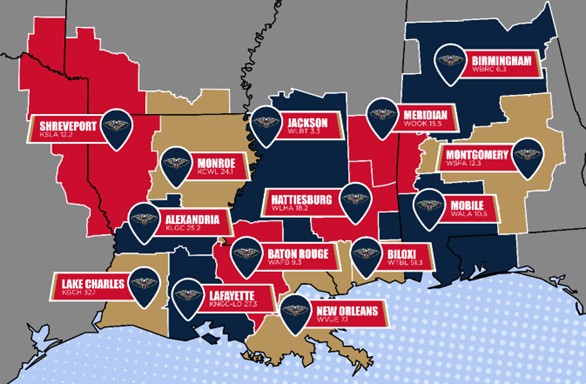A Ground-Level View of IP-Based Media Transport
NEW YORK—The broadcast industry is in a state of flux.
Gone are the days when the nuclear family gathered around a single large TV screen in the living room during prime time. Now there are new ways to consume media on a plethora of devices, and while that has created opportunities it has also created new challenges.
Consumption isn’t the only factor that broadcasters are facing. It has also begun its journey from SDI to IP and this has offered the promise to deliver more content while cutting costs. On the surface video over IP should be a smooth transition that delivers everything that broadcasters could possibly want.
“IP uses less power, and it is less expensive to do the sorts of things you could already do with a broadcast router,” said Al Kovalick, founder of Media Systems Consulting in Silicon Valley, author of “Video Systems in an IT Environment” and cloud columnist for TV Technology. “This is not new for some folks, but you need to be at a broadcast network level to start early with any new technology, and video over IP won’t come to small stations for another decade.” In this way IP is facing that all-too-common “chicken and the egg” scenario, warned Kovalick.

Bob Hesskamp “SDI won’t go away until the transition occurs,” he added. “Even if it were perfect, it would take years to get everyone to move to video over IP.” While it has taken years for video over IP standards to be resolved; only now is the transition truly beginning.
“We are just getting started with the conversion of our infrastructure to IP, but we know that we will be able to create efficiencies across a lot of our broadcast infrastructure,” said Bob Hesskamp, head of global broadcast technology services at Turner Broadcasting, who added that it significantly changes the equipment needs.
“The wiring, for example, will be much simpler. DAs, and patch panels are a thing of the past, and we can now put frame syncs and encoders into one device; interconnection between facilities will be much easier because most of the transmission between sites will be IP. When we make a complete transition we will be using less space and equipment which will reduce our footprint from both a real estate and carbon footprint perspective.”
The professional video industry's #1 source for news, trends and product and tech information. Sign up below.
ON-RAMP TO VIRTUAL WORLD
With new technology comes new opportunities, and this has great appeal for those in the broadcast trenches.

Thomas Edwards “One of the biggest advantages to the transition to IP is the ability to create virtual channels,” said Thomas Edwards, vice president of engineering and development at Fox Network. “You type a couple of lines of code and you can put your content on a public or private cloud as you need it. There is no coaxial connection to a virtual machine, so IP is the only onramp to that virtual world.” Video over IP can be as flexible even with linear channels Edwards added. “If you have to move facilities it means moving racks and racks of machines, but now you can copy the virtual machine and you’re good to go to a new facility. Software upgrades, disaster recovery and routine maintenance all benefit from a virtual IP solution.” The technology also has the promise of future proofing the production facility, so that it can handle other new technologies that are being adopted—UHD/4K, HDR or whatever comes next. By adopting an IP infrastructure support can be added for higher frame rates, 8K and more services can be added in what those already using it say is a more graceful fashion.
“That is the main motivation for IP as we see it,” said Mark Hilton, vice president of the networking business unit at Grass Valley, one of the founding members of the Alliance for IP Media Solutions (AIMS). “It is the necessary stepping stone to getting to a wholly virtualized datacenter model. The larger IT industry is already there and we’re seeing other industries moving quickly in that direction. There is a lot of value that can be had by adopting those technologies as it allows the broadcast world to adopt what is already the norm in the IT space.” As infrastructure becomes more software defined, it will maximize the use of production resources added Matthew Holcombe, vice president and production broadcast engineer at Turner Broadcasting. “When we are completely upgraded, every signal that comes into any of our facilities will be available in every facility so we will have one virtual production infrastructure creating incredible scale and flexibility.”
Turner is already taking the lead with video over IP.
“We are just beginning our project to convert Turner’s Atlanta infrastructure to IP,” said company spokesperson Michael Marinello. “We are, however, currently using IP for video delivery from the field for news/sports and also in our daily production for CNN between Atlanta, D.C. and New York. It’s been very reliable and cost effective as a transport for live remote and field production.”
This flexibility could further allow for maximized configurations of intercom, audio, cameras, graphics and video sources “to make them available wherever we need them and take advantage of this flexibility where it makes sense,” Holcombe added. “We will be able to configure video sources, graphics, captions, SCTE triggers and Nielsen, into countless customized feeds. It will also allow us the flexibility to spin up 1080p, HDR, or 4K production and transmission as needed.” More can be done with less as the industry makes the transition from SDI to IP.
“Because we are moving away from one signal per cable in an SDI facility, patch panels and the traditional monitoring test points are a thing of the past,” said Hesskamp. “We’ll have visual dashboards, logging, analytics and forensics to test and troubleshoot the infrastructure. However, this means we will need to train our existing staff to learn new skillsets and also will require us to recruit and hire more people who have expertise in these areas.”
FAR FROM PERFECT
For all its advantages, there are still some issues with IP that will need to be addressed and overcome.
“The hard part is that in the IP world latency can be a variable unless it is very carefully controlled and managed,” explained Jim DeFillippis, media and broadcast industry consultant and columnist for tvtechnology.com. “If there is congestion on a network, latency can be a significant problem. IP switches and routers either drop packets or try to buffer those packets, and buffering can introduce latency. As the number of routers and switches increases it can create even buffering issues.” The other issue is one of that aforementioned “chicken and egg” scenario as the industry makes the transition from SDI.
“One of the challenges has been that the standards are in place that have allowed for interoperability between vendors,” said Hilton. “However it is still a work in process.”
Standards and interoperability between different vendors will be critical, added Hesskamp. “It now seems as if the industry is coming together around SMPTE 2110/TR0-3. The design process is vital and time-consuming because configuration of the network and connection between facilities sets the stage for a successful implementation.” As a result of this work in process what we will see is a continued transition.
“There will be bridges between SDI and video over IP,” said Kovalick. “As bullish as I am, I’m still a practical guy and we have to accept there are millions of SDI connections. You’d think it would be easier to get there, but it is going to take time.” Fortunately the standards are coming together, thanks to efforts by groups such as the AIMS, which have helped put together the roadmap for this transition.
“There were some that were keen on the [Evertz] ASPEN approach,” said Hilton. “In our view, however, it wasn’t taking advantage of some of the open standards that have been proposed by SMPTE and adopted already by AIMS.” The formation of AIMS has thus been seen as very important by broadcasters.
“It has provided additional efforts to vendors and users who have made a pledge towards a ‘road map’ of a standard-based solution,” said Edwards. “This is crucial for this to work, so you don’t have to buy all your equipment from one vendor. Standards are how we accomplish this, and we see that every broadcast vendor is active in this standards issue.”
